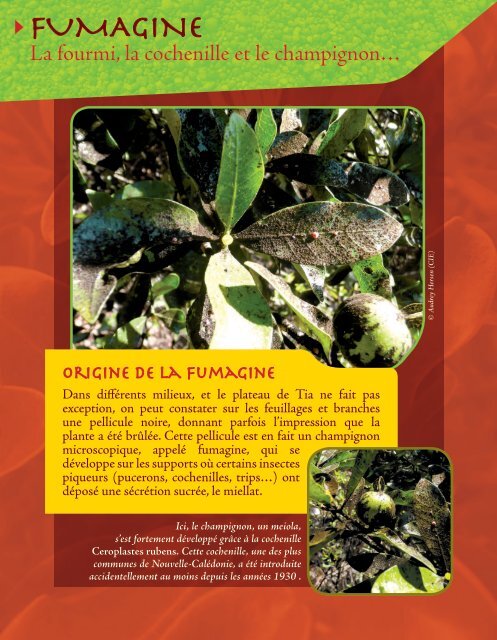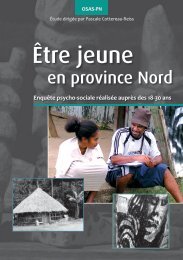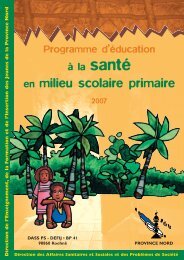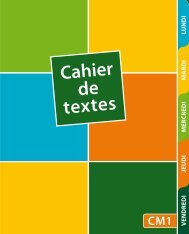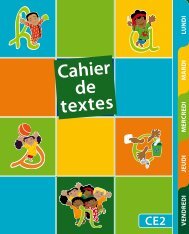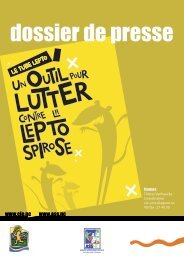Create successful ePaper yourself
Turn your PDF publications into a flip-book with our unique Google optimized e-Paper software.
FUMAGINE<br />
La fourmi, la cochenil<strong>le</strong> et <strong>le</strong> champignon…<br />
© Audrey Hersen (CIE)<br />
Origine de la fumagine<br />
Dans différents milieux, et <strong>le</strong> plateau de Tia ne fait pas<br />
exception, on peut constater sur <strong>le</strong>s feuillages et branches<br />
une pellicu<strong>le</strong> noire, donnant parfois l’impression que la<br />
plante a été brûlée. Cette pellicu<strong>le</strong> est en fait un champignon<br />
microscopique, appelé fumagine, qui se<br />
développe sur <strong>le</strong>s supports où certains insectes<br />
piqueurs (pucerons, cochenil<strong>le</strong>s, trips…) ont<br />
déposé une sécrétion sucrée, <strong>le</strong> miellat.<br />
Ici, <strong>le</strong> champignon, un meiola,<br />
s’est fortement développé grâce à la cochenil<strong>le</strong><br />
Ceroplastes rubens. Cette cochenil<strong>le</strong>, une des plus<br />
communes de Nouvel<strong>le</strong>-Calédonie, a été introduite<br />
accidentel<strong>le</strong>ment au moins depuis <strong>le</strong>s années 1930 .


